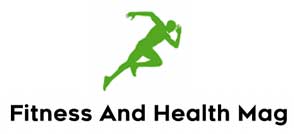We know stroke as an ailment that includes harm to brain tissue because of an absence of oxygen supply to the cerebrum. The stroke has a hazardous and unexpected beginning. It can be irreversible, or at least lead to death or pass on pretty much neurological severe harm to the individual who is impacted. We are confronted with the essential wellspring of inability. For this reason, prompt restorative intercession suitable to the case can have an effect.
Recognizing Stroke: Diagnosis
Following an episode of stroke, the initial step to take concerns a progression of principal tests to determine the type (ischemic or hemorrhagic stroke), the region of the cerebrum impacted by the connected harm caused, and the setting-off factor. It ought to be noticed that a hemorrhagic stroke, brought about by the crack of a vein in the cerebrum and, like this, blood spilling into the area, is lethal in 40/50% of cases.
An ischemic stroke, then again, which is brought about by the blockage of a course that keeps blood from streaming to the mind, subsequently impeding the appearance of oxygen to the cells, allows a much more prominent opportunity for endurance, equivalent to roughly 75/85%. In the two cases, a significant part of the opportunity for endurance and recovery really depends on how rapidly they are analyzed and treated.
Tests For Stroke Diagnosis
After an underlying consultative examination in which the specialist straightforwardly questions the patient, the family, or individuals who helped him in regards to the setting-off episode and the overall clinical and family circumstances, a progression of blood tests and instrumental tests are performed. The previous is helpful in assessing the blood coagulating limit, the glucose level, and some other awkward qualities. Instrumental tests are central, nonetheless, to comprehend what kind of stroke you are managing and its seriousness. They are:
- brain CT and angio CT;
- MRI;
- carotid ultrasound;
- cerebral angiography;
- classic and transesophageal echocardiograms.
Cerebral Stroke Therapy
Following an exchange to a medical clinic and determination to figure out the degree of the harm endured, the individual impacted by a stroke will require quick attention to defeat the intense stage and resulting restoration treatment of variable span. The decision of treatment depends on the kind of stroke endured, whether ischemic or hemorrhagic.
Treatment Of An Ischemic Stroke
To defeat the intense period of an ischemic stroke, in the event that the patient is in a legitimate condition, thrombolytic drugs are directed intravenously to assist with dissolving the clots and reestablishing a typical bloodstream in the impacted region. In this stage, idleness is fundamental: the sooner the circumstances standardize, the less chance of extremely durable harm will be there in an instant. Contingent upon the case, different medicines might be thought of, for example,
- thrombectomy, or mechanical removal of the thrombus;
- is obstruction of the carotid artery in the presence of severe carotid atherosclerosis, either through a TEA (carotid endarterectomy) or with angioplasty and stents;
- administration of aggregating drugs if the drugs mentioned above are not usable;
- administration of oral anticoagulant drugs.
Hemorrhagic Stroke Treatment
On account of a hemorrhagic stroke, treatment is directed toward halting the draining in the works and lessening the tension applied by the blood on the cerebrum tissue. Pharmacological treatment incorporates the organization of coagulants and, if essential, hypotensive endlessly sedates that decrease intracranial tension.
In instances of heavy death, a craniotomy medical procedure might be performed to eliminate excess blood. Assume an aneurysm caused a hemorrhagic stroke. You might continue with cutting (the conclusion of the foundation of the aneurysm), endovascular embolization, or other surgeries to be assessed, depending on the situation.
Rehabilitation Therapy After A Stroke
After emergency therapy, stroke treatment is directed toward recovering the cognitive capabilities harmed by the stroke. The singular will require restoration treatment to be done in their offices or their own home, as appropriate. Restoration is a primary step for the recovery of engine, semantic, and substantial resources, focused on the aggregate or fractional reclamation of everyday exercises, contingent upon the harm endured.
The restoration interaction isn’t something similar for everybody. Recovery after a hemorrhagic stroke is often just fractional and requires a reasonably lengthy excursion. Different variables impact post-stroke recovery, for example, the patient’s age, the setting-off causes, the idleness of salvage, and the nature of the restoration cycle (which incorporates the resolve of the people who have been impacted).
ALSO READ: WHAT CAN HIGH CHOLESTEROL DO TO THE BODY?
